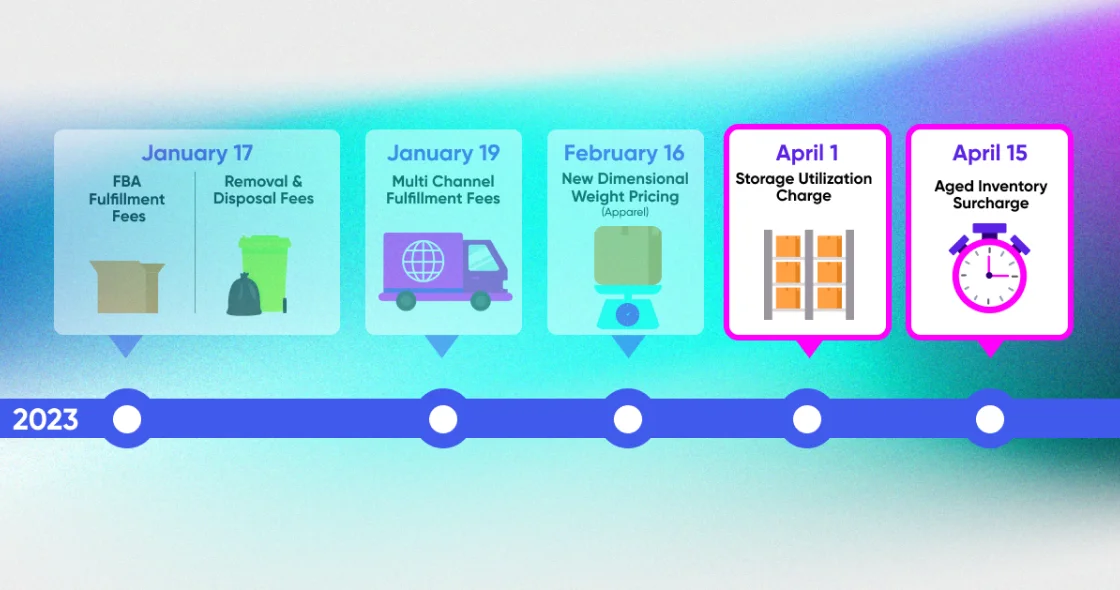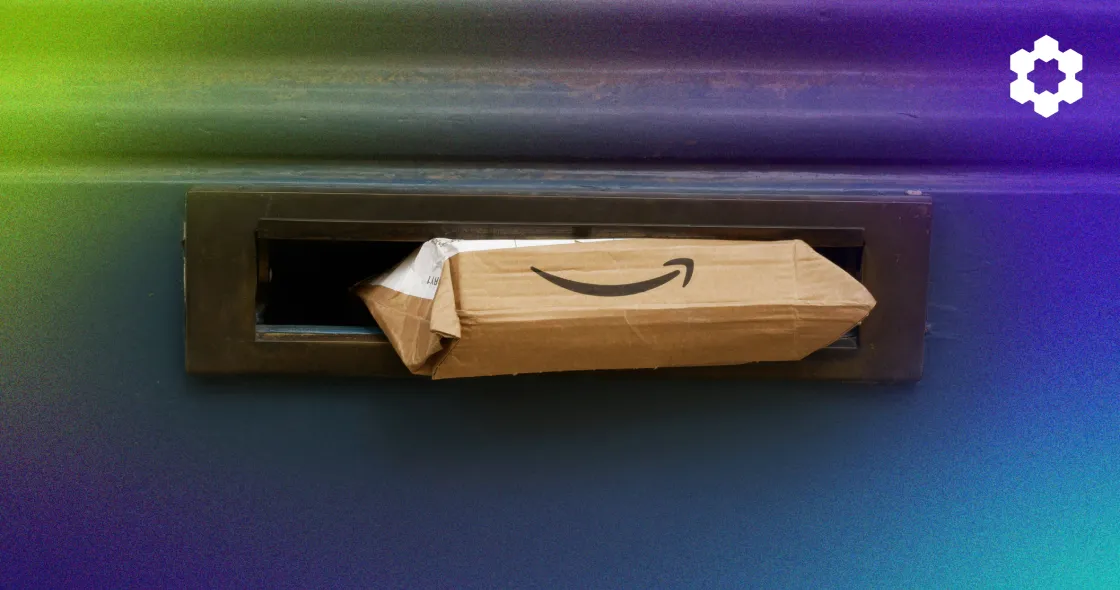The clock is ticking for Amazon sellers with heaps of stale products at FBA!
New fees tied to your storage utilization ratio and aged inventory are set to take effect in April. This is to limit unproductive use of FBA with unsellable goods, which are not only clogging up Amazon warehouses, but also get working capital tied up in holding costs.
For US sellers, here are the key dates to watch out for:
- April 1, 2023 – Storage Utilization Surcharge takes effect
- April 15, 2023 – Aged Inventory Fee Increases
Amazon will also update its fees for UK and EU multi-channel fulfillment (MCF) orders on April 7, 2023 to cover rising operating costs.
Here’s everything you need to know about the upcoming Amazon fee changes, and what you can do to minimize or avoid them.
Storage Utilization Surcharge
Amazon will apply a new surcharge for professional sellers with a storage utilization ratio beyond 26 weeks starting:
When calculating your utilization ratio, Amazon looks at your average daily inventory volume (measured in cubic feet) and average daily shipped volume (in cubic ft) over the last 13 weeks.
Here’s a quick example using Amazon’s formula:
Your utilization surcharge will vary depending on your utilization ratio and product size tier, as shown in the table of fees (for US sellers) below.
Off-peak period (January-September), starting April 1, 2023
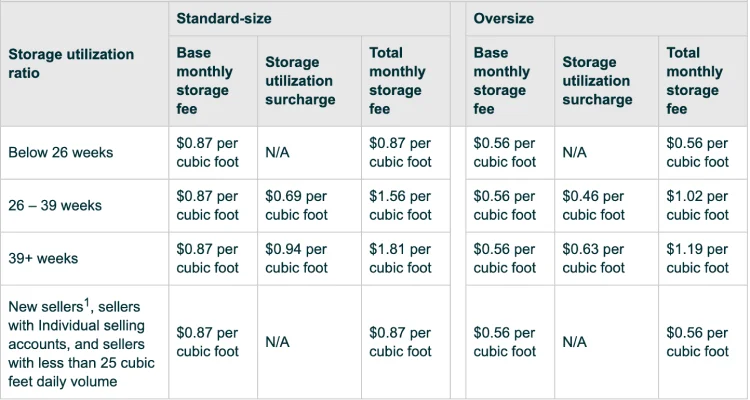
Peak period (October-December)
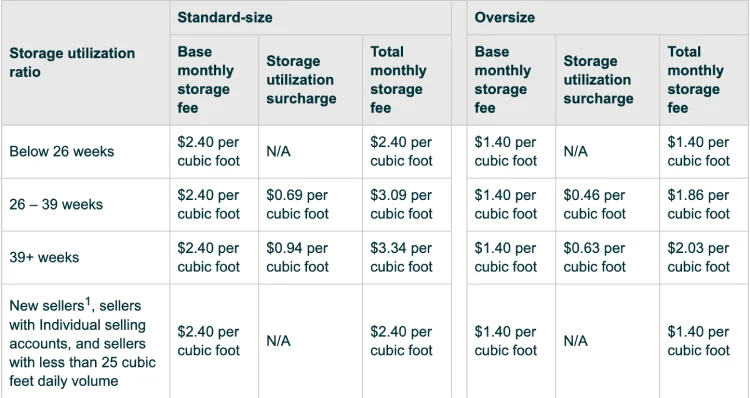
So, suppose you have 29 weeks worth of standard-size inventory in FBA at the end of Q2 2023. In that case, an additional $0.69/cubic foot will be applied on top of your monthly storage fee. That works out to about:
In addition, the time of year also has a direct impact on your total storage cost. During peak, the base monthly storage fee for standard size inventory increases to $2.40/cubic ft, bringing your total storage rate to $3.09 per cubic foot.
How to Lower Your Storage Utilization Ratio
Amazon counts both inbound shipments and on-hand inventory toward your storage utilization rate. There are few ways you can reduce it:
- Delete unused shipping plans
- Get rid of excess inventory
- Fix stranded inventory
- Improve your inventory turnover ratio
Not only will these help you to quickly free up space, but as your storage utilization rate improves, so will your IPI score, which is a crucial inventory metric that Amazon uses to set your capacity limits.
Aged Inventory Fee Increases
Expect to see new aged inventory tiers and higher aged inventory surcharges starting:
Introduced in 2022, the Aged Inventory surcharge was a new fee structure that essentially replaces long-term storage fees. The additional tiers also cut the amount of time products can be stored in FBA before you start incurring these aged inventory fees.
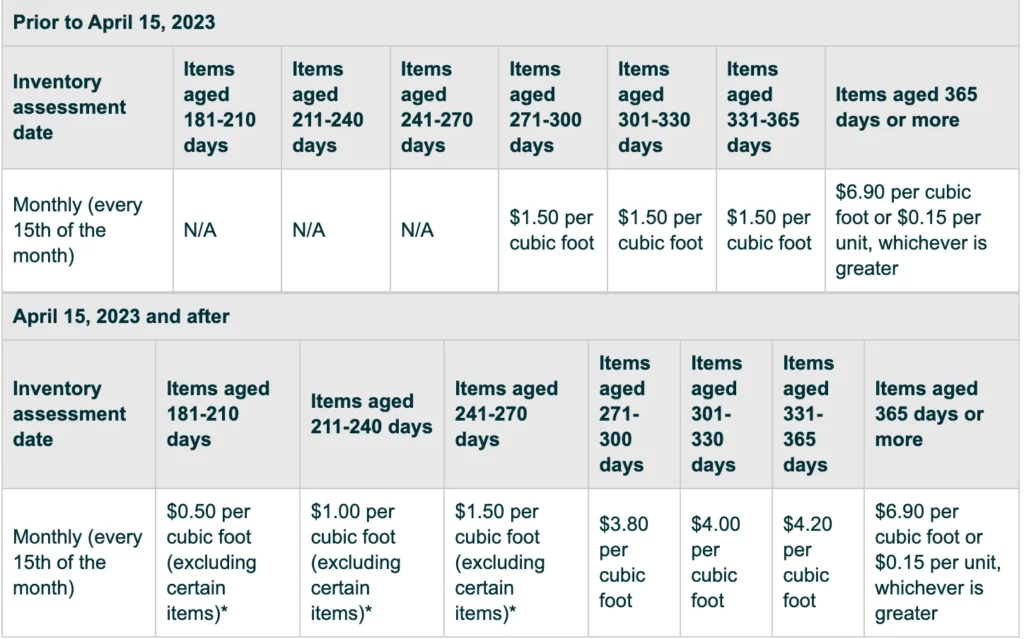
Inventory surcharges kick in around the 6th month. If you have items aged 181-210 days, you will incur an additional $0.50/cubic foot on top of other applicable storage fees. The Aged Inventory Surcharge could also go as high as $6.90/cubic foot for units aged 365 days or more.
To avoid or minimize these surcharges, consider running a flash sale to quickly get rid of any aging inventory and recoup some money.
If your goods have already been deemed unsellable by Amazon, you may instead choose to enable automatic removal of your old inventory. This will give you the option to either have your aged units returned to your warehouse for a fee, or disposed/liquidated through FBA liquidations before the surcharges kick in.
If opting for removal so you can refurbish and resell your product, note that removal fees have also been raised this year while liquidation fees remain the same.
Make sure to calculate the difference between the cost of removing and reselling your product versus the cost of liquidation to make an informed decision about what to do with your inventory.
UK/EU MCF Fee Updates
Amazon also recently announced they will make the following fee changes to UK/EU MCF orders on April 7th, 2023.
Minimal Decrease or No Change for Envelope Packages
Standard and expedited local shipment fees for envelope packages and parcels largely remain untouched, except for large envelopes and a few standard parcels that experience a £0.01 decrease from last year’s rates.
However, the rate for shipping an envelope across Europe slightly increased by £0.08 on average.
Significant Increase for Parcels and Oversize
Unfortunately, we can’t say the same for cross-border parcel and oversize shipments, as Amazon has increased the fees significantly.
For example, the expected increase in standard cross-border shipping fee ranges from £0.77 (80g small envelope) to £7.32 (31.5 kg large oversize) per single unit order.
Moreover, anyone who uses expedited cross-border shipping will need deep pockets. The increases are steeper, averaging a little over £1 for envelopes, £1 to £5 for standard parcels, £6 to £9 for standard oversize, and £10 for large oversize.
To see these fee changes in detail, check out Amazon’s latest on 2022 MCF Fees and 2023 MCF Fees.
Encourage Customers to Buy Multiple Items per Order
The good news is Amazon will continue to apply multi-unit discounts on envelope and parcel size tiers. These discounts may help lower your MCF fees by up to 40%, as shown below.
Standard Local Multi-Unit Discounts
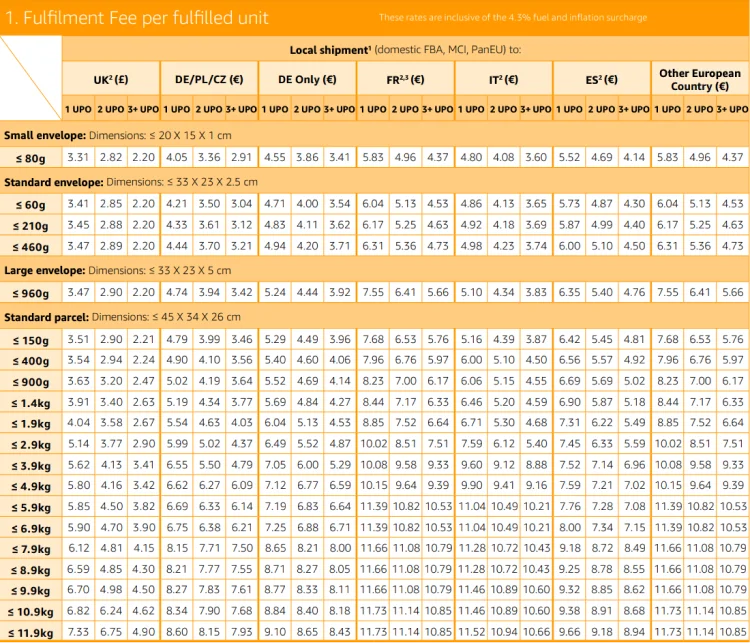
To increase your multi-unit sales, consider giving out coupons for minimum purchase amounts, offering add-ons to your products, or promoting virtual bundles.
Final Thoughts
It’s hard to see the benefits of these storage-related surcharges and MCF fee increases, but they may actually push sellers to be more efficient in managing inventory, which could save money in the long run.
For instance, to reduce or avoid additional storage fees, you may need to improve the accuracy of your inventory forecasts so you don’t end up over-ordering or overstocking.
You may also need to have enhanced visibility into your inventory health so that you know which products need a sales boost so you can quickly get rid of them. Increased inventory visibility can also help you to figure out when it’s time to reorder and by how much.
Overall, while fee increases are out of your control, you can do something to offset their impact on your profit margins. Whether it’s by automating inventory forecasting and tracking with SoStocked or creating discount promos on your MCF listings.
Want to learn more about fee increases in 2023? Download our white paper, Attack of the Fee Stack to see more case studies and analysis from industry experts.
